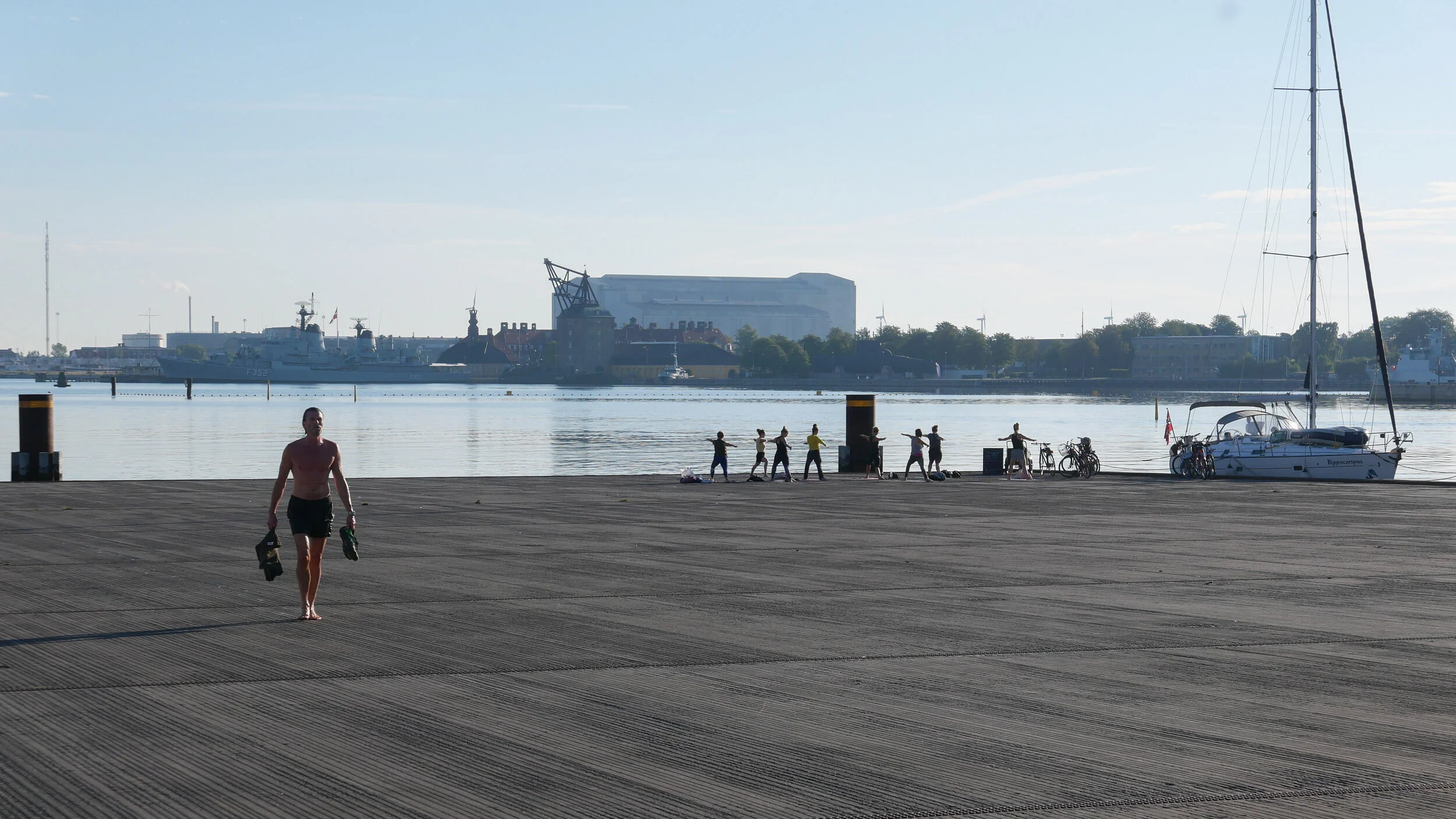will the inner harbour in Copenhagen change in the next decade but not in a good way?
/The inner harbour in Copenhagen is at the very centre of the historic city. It's been built around and built into for over 500 years but it is still the biggest and the most important natural resource that the city has.
It was a large and sheltered harbour here that has been at the core of the mercantile and the military success of the city but commercial shipping has moved north or away to other Danish ports; big ferries no longer come right into the harbour but go to a new terminal north of the city; cruise ships, at berths along the Langelinie Quay, so immediately outside the inner harbour - and in any case a mixed blessing - look more and more under threat, post coronavirus, and the Danish navy began moving out of the inner harbour in the 1990s and, with the imminent downgrading of the Holmen naval base, Copenhagen will be neither the physical centre nor the ceremonial and administrative heart of the navy.
work has started on the major development on Papirøen to the right of this view with some of the tallest apartment buildings on the harbour that will block part of this view
the area immediately this side of the Opera house has been excavated for an underground car park. The area will be replanted with trees but it will close in the view and the next stage will see big new apartment blocks built immediately beyond the Opera house.
For my first two years in the city I lived downwind of the gun on the navy battery that marks the raising of the national flag at daylight and marks each dusk and it was very reassuring. It set a rhythm to the day and I missed it if the wind changed and carried the sound away or if the noise of traffic was too loud and muffled the boom.
Does that matter? Do enough people in the city know or care? Will the gun continue to fire even if it is surrounded by expensive new apartment buildings?
As I've said before, I love the light over the harbour that changes through the day and through the seasons. I would miss that more than anything else if I ever have to move away from the city and if any tourist ever asked me if there was one thing in Copenhagen that they should not miss then I would say a walk up on the ramparts of Kastellet to look over the harbour and look out to the fort and the sound beyond and then a slow and quiet walk or find a seat somewhere along the quay to watch the harbour either come to life, if it’s the early morning or, if it is evening, to watch the harbour slowly wind down as the light fails.
But, is that enough to mean development should stop or, at the very least, go forward slowly and carefully? I'd say yes because we are accountable as a generation to do what is best to protect the open space of the inner harbour. After 500 years, doesn't it deserve due diligence?
Holmen - the naval area of the harbour beyond the Opera house - is about to be developed and one development plan shows apartment buildings hard round the 17th-century Mast Crane which will mask and hide that amazing silhouette
Of course the harbour does have a new role for leisure - for sailing and for swimming - but is that enough?
Certainly the harbour needs life. The annual harbour festival; the tall ships when they come here; the bonfires on the evening of Sankt Hans are all amazing and popular and not just for tourists but the harbour needs more. It actually needs to be socially and commercially relevant and not simply as a bankable view that increases the potential value of expensive new apartment buildings.
The harbour really is a means to break the domination of road transport and to change the way people move through the city and to change how goods are distributed or delivered in the city. For a start the harbour ferry has become swamped by tourists when it should be a working and relevant part of the transport system and why not start new fast ferry services to Malmö or Køge or Helsingborg or even Gothenburg - centre to centre?
The inner harbour needs more swimming places but fewer boom boxes; more kids in canoes but fewer drunks on wannabe super yachts; more apples from Fejø and more fresh fish sold at the quay - bring back the fishwives (or even fish husbands) to Højbro Plads - but control any new restaurant boats in the wrong places.
With developers looming over potential spoils and with the threat of global warming and the need to be realistic about protecting the city from storm surges, is the inner harbour, as we know it now, threatened for the right or the wrong reasons or is it a huge resource that, with imagination, can and should be at the heart of the city?











































